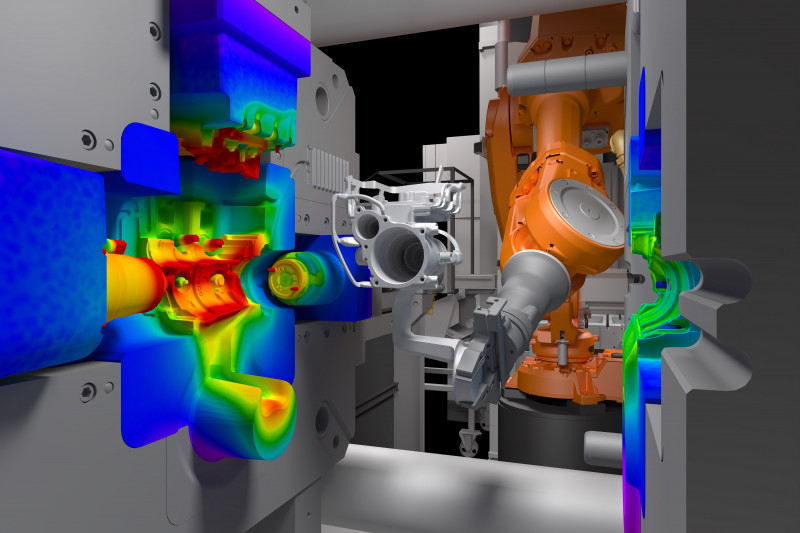Introduction
Aluminum die casting is a widely used manufacturing process that allows for the mass production of complex and intricate metal parts. One of the key components in this process is the aluminum die casting mold. This article aims to provide a comprehensive guide to efficiently creating an aluminum die casting mold.
1. Designing the Mold
The first step in creating an aluminum die casting mold is designing the mold itself. This involves determining the shape, dimensions, and features of the final part. The mold design must take into account factors such as draft angles, parting lines, and the gating system.
Draft angles are critical to ensure the smooth ejection of the part from the mold. Parting lines define the separation between the two halves of the mold and should be strategically placed to minimize the impact on the final part\’s aesthetics. The gating system determines how the molten metal is injected into the mold and must be designed to minimize turbulence and achieve optimal filling.
2. Selecting the Mold Material
Choosing the right material for the mold is essential for achieving efficient manufacturing. The most common materials used for aluminum die casting molds are steel and aluminum alloys. Steel molds offer excellent durability and heat resistance, making them suitable for high-volume production. Aluminum alloys, on the other hand, are lightweight and provide better thermal conductivity, allowing for faster cooling times.
The selection of the mold material should consider factors such as the expected production volume, part complexity, and budget constraints. It is advisable to consult with mold material suppliers and experts to make an informed decision.
3. Machining the Mold
Once the mold design is finalized and the material is selected, the next step is machining the mold. This involves using computer numerical control (CNC) machines to accurately shape the mold according to the design specifications.
The machining process should be carried out with precision to ensure the mold\’s dimensional accuracy and surface quality. Advanced machining techniques such as high-speed machining and electrical discharge machining (EDM) can be employed to improve efficiency and achieve complex geometries.
4. Heat Treatment
After machining, the mold undergoes a heat treatment process to enhance its mechanical properties. Heat treatment involves heating the mold to a specific temperature and then cooling it according to a predetermined schedule. This process helps improve the mold\’s hardness, strength, and wear resistance.
The specific heat treatment method and parameters depend on the chosen mold material. It is crucial to follow the manufacturer\’s recommendations or consult with heat treatment specialists to ensure the best results.
5. Mold Assembly and Testing
Once the individual mold components are machined and heat-treated, they are assembled to form the complete mold. The mold assembly process requires precise alignment and securing of the different components to ensure proper functioning during the casting process.
After assembly, the mold is tested for functionality and performance. Various tests, including dimensional verification, leakage testing, and flow simulation analysis, can be conducted to ensure the mold meets the desired specifications.

6. Maintenance and Lifespan
Proper maintenance of the aluminum die casting mold is essential for prolonging its lifespan and ensuring consistent part quality. Regular cleaning, lubrication, and inspection should be carried out to prevent corrosion, minimize wear, and identify any potential issues.
Over time, molds may experience wear and require repair or refurbishment. It is crucial to monitor the mold\’s performance and address any signs of deterioration promptly. Regular maintenance and timely repairs can significantly extend the mold\’s lifespan and reduce production downtime.
Conclusion
Creating an aluminum die casting mold requires careful consideration of various factors, including mold design, material selection, machining, heat treatment, assembly, and maintenance. By following the steps outlined in this guide, manufacturers can achieve efficient and cost-effective manufacturing of aluminum die cast parts. Properly designed and maintained molds contribute to higher productivity, better part quality, and longer mold lifespan in the aluminum die casting industry.
-

- Customized foundry products high precision die-casting parts for e-bike integrated frame
-

- Mangensiumseoksesta painevaluvat Thixomolding-metallijarrut
-

- Magnesiumseoksesta valmistettu tukkupyörä 3–5-vuotiaille 12 tuuman lasten pyörä OEM halvalla
-

- Mangensium alloy die-casting Thixomolding helmet
-

- Magnesiumtiksomovausosat UAV-kotelo
-

- Magnesium alloy die-casting Auto parts Side step Running board

 0086-750-5616188
0086-750-5616188 +86 13392089688
+86 13392089688 sales@zhongmei-tech.com
sales@zhongmei-tech.com







